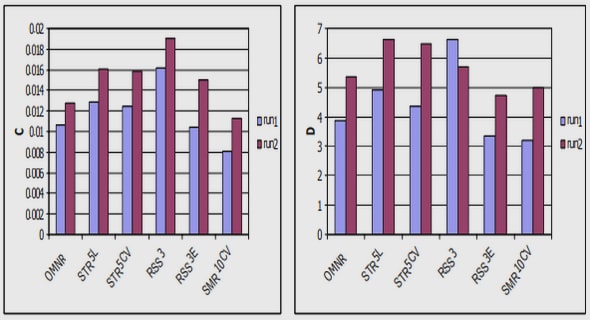(Downloads - 0)
For more info about our services contact : help@bestpfe.com
Table of contents
INTRODUCTION
CHAPTER 1: THE Na-MCl2 BATTERY TECHNOLOGY
1.1. Invention and developments
1.1.1. The origin
1.1.2. The ZEBRA project: from proof of concept to prototyping
1.1.3. 1982-1989: bringing the technology to the next level (Beta R&D and the AAC)
1.1.4. 1989-1998 The industrial Scale-up (the AAB years)
1.1.5. 1999-2015 From EV applications to large stationary storage systems
1.2. Operating principles
1.2.1. Key elements and cell reactions
1.2.2. The front reaction hypothesis
1.2.3. Focus on the secondary electrolyte NaAlCl4
1.2.4. Additional requirements
1.3. The FIAMM commercial technology
1.3.1. The ML/3X unit cell: design, constituents and conditioning
1.3.2. Unit cell performances
1.3.3. Environmental impact and health issues
1.3.4. Battery modules: influence of cell failures to packs general design
1.3.5. Battery modules: performances and management
1.3.6. Battery lifetime and ageing
1.3.7. Safety and recyclability
1.3.8. Large energy storage systems: general design and applications
1.3.9. Objectives of the thesis
CHAPTER 2: ELECTROCHEMICAL CHARACTERIZATION OF THE COMMERCIAL CELL
2.1 Electrical performances
2.1.1 Constant discharge voltage curves
2.1.2 Standard charge voltage curves
2.2 Cyclic voltammetry experiments
2.2.1 Full scan of the cell at very low rate
2.2.1.1 Experimental and peaks initial attribution
2.2.1.2 Full scan peaks analysis
2.2.1.3 Discussions about these first results
2.2.2 Additional tests: partial cyclic voltammetry scans
2.2.3 Conclusions
2.2.4 Cyclic voltammetry with increasing scan rates
2.3 OCV dependence of the temperature
CHAPTER 3: 2D MODEL DEVELOPMENT OF THE COMMERCIAL CELL
3.1 Isothermal electrochemical model of the Na-MCl2 cell: state of the art
3.1.1 Porous electrode electrochemical model requirements in molten salts
3.1.2 The seminal 1D model: governing equations
3.1.2.1 Ohms’s law for electronic conduction ( ϕ1)
3.1.2.2 Ohms’s law for ionic conduction ( ϕ2)
3.1.2.3 Material Balance
3.1.2.4 Charge transfer kinetics
3.1.2.5 Molar average velocity of ionic species in the secondary electrolyte
3.1.2.6 Porosity and volume fractions changes
3.1.2.7 Specificities of the seminal model
3.1.3 Subsequent works
3.2 Integration of the thermal model
3.2.1 Thermal model requirements for an electrochemical cell
3.2.2 Potential heat effects in Na-MCl2 cells
3.2.3 Focus on the reversible heat
3.3 2D model development
3.3.1 Geometrical design considerations and meshing
3.3.2 Parameters and variables of the model
3.3.2.1 Active materials microstructural parameters and quantities
3.3.2.2 Secondary electrolyte melts properties
3.3.2.3 Reference exchange current densities and transfer coefficients
3.3.2.4 Thermal parameters and variables
3.3.2.5 Geometrical parameters
3.3.3 Governing equations: practical implementation in Comsol
3.3.4 Governing equations in domain 1 (negative steel casing)
3.3.5 Governing equations in domain 2 (negative sodium electrode)
3.3.6 Governing equations in domain 3 (BASE separator)
3.3.7 Governing equations in domain 4 (porous positive electrode)
3.3.8 Governing equations in domain 5 (the carbon felt)
3.3.9 Thermal-electrochemical coupled model
3.4 Initial simulation strategies
CHAPTER 4: RESULTS AND DISCUSSIONS
4.1 Electrochemical two-steps mechanism simulations in isothermal mode
4.1.1 Initial tryouts
4.1.2 Simulations with constant melt composition (non-isothermal model)
4.2 Solid state process simulations in discharge mode
4.2.1 New working hypothesis
4.2.2 Baseline simulation of a constant discharge
4.2.2.1 Baseline simulation for the non-isothermal model
4.2.2.2 Baseline simulation analysis
4.2.2.3 Baseline simulation in isothermal mode
4.2.3 Impact of the rate of discharge
4.2.4 Impact of the initial temperature
4.2.5 Impact of design changes
CONCLUSIONS AND PERSPECTIVES
APPENDIX A: GOVERNING EQUATIONS IN THE SEMINAL PAPER
APPENDIX B: LIST OF SYMBOLS
APPENDIX C: ANALYTICAL EXPRESSIONS
BIBLIOGRAPHY



